401 Main Street - The Bell Family story and photography by Ellis Anderson Brehm and Jenny Bell were all set to build their dream home. They owned a lovely lot in Old Town and architect Ed Wikoff had worked with the family to come up with plans for a house that would be their “forever home.” Final tweaks were being worked into the design. The stars seemed aligned for perfection. Then Jenny, who was driving through Old Town in a rain shower, chanced to see realtor Amy Wood dashing to her car after posting a “for sale” sign in front of 401 Main Street. She stopped her own car in the middle of the street. She called her husband, Brehm, a local attorney, on the cellphone. “Brehm, you know that house I’ve always loved?” she asked. “The pink one on the corner of Main and Necaise? It’s on the market.” The couple booked an appointment for a showing that same day.  Jenny, a practical-minded woman, doesn’t think of herself as being clairvoyant, yet the week before she had specifically mentioned the house at 401 Main in a conversation with a close friend. She’d confided that if something wonderful - just the right thing - came open in Old Town, they might put aside their house plans and buy instead of building. It’d have to be a place we both really loved, she told her friend. Something like the Pink House. However, both Brehm and Jenny went to the showing with open minds. They were prepared to walk away, although Jenny at least hoped to snag a few ideas they could incorporate into their own house plans. She recalls, “We walked through the gardens first and then through the front door. It just immediately felt like home. And even though it'd been renovated, the charming character of the house had been left intact.” After the initial walk-through, the couple sat in the outdoor pavilion and tried to absorb the situation. Did they love the house so much that they could ditch the idea of building? Later that day, they set up a second appointment so their four teenage/young adult children could take a look. The deal was cinched when they all expressed enthusiasm. The kids were especially excited by “the outside rooms.” While the original house was built sometime in the 1890’s, the former owners, Jim and Lori Lewis, had constructed two outbuildings The first contains a large living area with kitchenette, a finished attic space and a workshop. After the Bells purchased the home, they made the building a complete studio apartment by converting a closet into a full bathroom. There’s even room in the studio building for Jenny’s office. The graphic designer used re-purposed historic doors to create a chic room divider between a guest bedroom area and her workspace. The second outdoor building is just a few steps away, across an intimate courtyard garden paved with bricks. There's a pond in the center, where fish flash in filtered sunlight like slices of orange. The many-paned glass walls of the “pavilion” give it a charming fairyland feel. Inside the tiny cottage, the exposed rafter ceiling seems higher than the room is wide. The Bells have furnished it with a suspended television, comfy chairs and game tables. Jenny says it’s already become a favorite teenage hangout, while the adults have found it to be the perfect fair-weather spot to enjoy football games. The overhang of the pavilion creates the roof for yet a third outdoor living area. A massive brick fireplace steals the show as the centerpiece. Two stained glass doors hang on either side to give privacy from passing cars on the street. On chilly nights when the winds are brisk, a thick canvas shade can be pulled down to make a "wall," turning the brick patio into a cozy place for conversation or simply watching the fire. “The Lewis’s did such a great job of making the additions mesh architecturally with the main house,” says Jenny. “They really loved on this house. We’re blessed by all their attention to detail.” The Bells are looking forward to putting their own stamp on the pink house as time goes on. But they’re not in a hurry. In the meantime, they’re settling into the rhythm of life in Old Town’s Historic District. They walk or bike to visit friends, go to church, eat out or just to take in the scenery of the beachfront. “This is the place where we want to be for life,” Jenny says. “And that’s a good feeling.” The Bells are seeking to learn more about the history of 401 Main Street. If you have information about this house's past, you can email them here! Tarts and Tramps and Pirates and Wenches In former times, residents of Bay-Waveland closed the lids of their costume boxes after Halloween and stored them in the closet until the beginning of Carnival season. No more. Last November, The Arts, Hancock County rocked the event scene in Bay St. Louis with a Vaudeville-themed costume ball. Organizers were pleasantly surprised when more than 150 patrons - mostly in costume - attended the 2013 Tarts and Tramps Ball to benefit the non-profit. The event was the talk of the town for weeks after. The grand finale included choreographed dance numbers by a group of local women who perform under the name “Big Sleazy Burlesque.” Although their show was “G” rated and a far cry from “sleazy,” it brought down the house with cheers and laughter. “People are still talking about the ball a year later,” says Arts president, Cynthia Mahner. “How many times does that happen?”  After hearing accounts of the first annual ball, those who missed it swore they’d catch it next year. Fortunately, next year has arrived. The Second Annual Tarts and Tramps Ball Benefit will take place on Saturday, November 15th, from 7pm – 11pm at the historic 100 Men Hall in Bay St. Louis. But this time, there’s a new spin. That Saturday also happens to be “Pirate Day in the Bay.” Pirate Day is a warm-up event for the 200th anniversary of the battle of the Bay of St. Louis, which is slated for December 13th. Pirate Day features several activities, including a costume contest in the afternoon. “Two costume events taking place in the middle of November? Only in Hancock County,” says Mahner, laughing. “So we opted for a pirate spin too this year. Mixing vaudeville and buccaneers is over-the-top silly, but that way people can wear the same costumes all day, swaggering around town in the afternoon and dancing with us in the evening. We look at it as a creative opportunity.” The Tarts and Tramps/Pirates and Wenches Ball will feature food by the Silver Slipper Casino, beer from Lazy Magnolia Brewery, a cash bar and a vaudeville-style variety show. The entertainment line-up includes (of course!) the Big Sleazy Burlesque, The House Katz band, Ivory Bill – “rare, rockin’ Americana” - and more local favorites. Tickets for the benefit are $25 in advance and $30 at the door. To make it easy, patrons can purchase advance tickets on-line. They’re also available at The French Potager and Bay Books in Old Town. Tickets will be available at the door. This year, the Arts is inviting local businesses to participate by sponsoring tables at the event. A 22-top is $100, a 12-top table is $60 and a 4-top is $20. Businesses can decorate them according to the Pirate or Vaudeville theme using advertising and promotional materials (contact The Arts for details!) Favored costumed are vampy attire for women, trampy attire for men and of course, anything that might be found in a buccaneer's sea chest. Mixing up the two themes is encouraged. All proceeds support various programs of The Arts, like the popular Imagination Station for children and the annual Arts Alive! event, which will take place in March of 2015. Mahner is enthusiastic about the early community response to the 2014 event. “As our main fund-raiser for the year, the ball is a financial force for ArtsAlive!,” says Mahner. “But it’s also a fun way for The Arts to connect with members of the community - while partnering with other nonprofits, businesses, and community organizations.”
| Well, Well, Well is sponsored by Morning Cocktail Recipe
~ Froogles ~ Claiborne Hills ~ Herbal Alternatives (they have organic local honey, too, and many herbal supplements) BASIC DETAILS Wedding theme: Vintage Traveler Ceremony Took Place: Bay St. Louis Depot Grounds - 1928 Depot Way; Bay St. Louis (228) 466-8951 Reception: 100 Men Hall - 303 Union St., Bay St Louis, MS (228) 342-5770 Wedding Planner: Wedding Coordinator: Ashley, Owner of Flower Child Weddings, Atlanta, GA, 404.220.7220 | ash@flowerchildweddings.com | www.flowerchildweddings.com Photographer: Elizabeth LePage, Portland, OR BEFORE THE WEDDING Places Couple Registered: Pottery Barn, Sur La Tablè Invitations: Made by bride and groom Bay-Waveland accommodations for wedding party: Rental home Bridal Luncheon: Bridal Luncheon at Face and Body Aesthetics – 131E Main Street, Bay St. Louis 228.671.1808 Rehearsal Dinner: rooftop of The Blind Tiger, 119 N Beach Blvd, Bay St Louis THE CEREMONY Hair and Makeup: Megan Belless- Atlanta-based hair stylist, based out of Arbor Salon and Spa Florals by: Imagine That, 801 Hwy. 90, Bay St. Louis, 228-467-2693 Wedding ceremony music: Bride walked down the isle to "Angel" by Jack Johnson Wedding Officiated by: Caleb Aldrich Matron of Honor: Melissa Ricci- sister of the bride Best Man: Endrè Cseley- brother of the groom Groomsmen:
Bridesmaids:
Bride wore: Custom-made gown from Jessie's Bridal on Etsy Groom wore: J. Ferra sports coat and slacks, Zara button down shirt Time of day: 4:30 pm Weather: Perfect! Sunny, breezy and comfortable Most Romantic Moment: Walked back down the aisle after exchanging vows, and having our moment to ourselves with the wedding photographer capturing candid shots THE RECEPTION Wedding reception music: Pat Murphy and the Jumpin’ Jukes, (228) 216-5446 Catering: Neil’s Catering (Southern Delights Restaurant), 299 Highway 90 #B, 228.463.1277 The Reception Menu: hors d'ouvres: mini crawfish pies, crab dip, and hummus with veggies; Dinner: gumbo, muffelata sliders, and a po-boy bar (choices of fried shrimp, roast beef and gravy, and eggplant ) The Most Talked About Food Item: Po-boy bar Signature Cocktail: Topo Tito with lime (Tito's vodka, Topo Chico, garnish of lime) Cakes by: Donna Torres Best Dancer at the Reception: Nicolas Mees The "wow factor" of your wedding/reception that everyone talked about: Venue (100 Men D.B.A. Hall) and decor The most unique detail of your wedding/reception: Free-standing globe used as a guest book Honeymoon location: Cancun, Mexico Bride's favorite part of the entire event: Photographs of just the bride and groom Groom's favorite part of the entire event (honeymoon doesn’t count!): Outdoor games at the reception (bocci ball, giant chess, cornhole (bean bag toss) Gifts for Wedding Party: Bridesmaids: robes, Toms shoes, Turkish bracelet; Groomsmen: straw fedora, portable notebook, stylish pen, bottle of bourbon Guest Favors: Coffee beans in a small burlap sack Ginger's Tips for a Standout Wedding  So you are officially engaged! Now WHAT? Most brides can envision their wedding day from the time they are a little girl but once the time comes to start planning...they have no idea where to start! The first steps in planning should always be deciding the size of the guest list closely followed by discussing the wedding budget. By making these two top decisions first they will serve as the foundation for all your future decisions. For example, if you have a large guest list with a modest budget you may have to cut corners on serving a fancy sit down dinner by serving hors d'oeuvres at the reception instead. But if a sit down dinner is a priority for you, then you may have to look at cutting back the guest list. Just remember the qualities that are most important to you should serve as your guide throughout the planning process. Much love! What We Bring My name is Daisy Mae Delray and I am a seizure alert dog who lives and works in Bay Saint Louis, Misssissippi. I have access to places that most animal companions cannot go, so my view of the human/animal companion bond is a unique one. In my column for the Fourth Ward Cleaver I will be commenting on that bond as I report on our county and the many connections I find between humans and their companions. I write in gratitude for my life as a dog, and for the great joy that I bring to my human companion. I believe that the bond we share is a bond for life. Devotion and loyalty are primary bonds that we have with our humans. Cats and dogs, parrots and ferrets, horses and hamsters; the species does not matter. Between us and you humans there is something sacred going on. For the past 14,000 years with dogs and at least 7,000 years with cats there has been a partnership of emotional bonding. What else do we bring to the relationship?
I’ll be covering local pet-included events and reporting back to you. I will be looking for: Pet friendly hotels, restaurants that have outdoor seating & menus for the 4-legged diners, pet sitters, shopping suggestions for food, clothing, toys, etc., veterinary care, profiles of local animal residents, books and magazines to read, special events, dog on the street interviews, stories about kids and their pets and just living and loving being here on the Mississippi Gulf Coast. To communicate with you at other times in the month I have created a blog which I'll be populating with information and other details. This is my first blog so bear with me. Your input and ideas will be greatly appreciated. I look forward to hearing from you and writing about the human pet companion bond. Keep your feet dry and your tail high. Love, Daisy Mae  While most people who live on the Mississippi coast are aware of both Port Bienville and Stennis International Airport, they’re not familiar with the facilities’ assets - or their economic potential. Hancock County Port and Harbor Commission (HCPHC) executive director Ashley Edwards is changing that. In fact, Edwards is planning for Hancock County to soon be a name that’s recognized in global corporate circles. As a former business journalist, he understands that it’s mainly a matter of getting the word out - the two facilities, both managed by HCPHC, sell themselves. For instance, the port boasts a 3800-acre industrial site connected to the Intercoastal Waterway. Three major interstates run within a stone’s throw. The industrial park is served by a shortline railroad that ties into the CSX lines. The airport’s creds are equally impressive. The grooved and lighted runway is one of the longest in the Southeast, stretching for over a mile and a half. It’s strong enough to support super-sized aircraft like the Antinov, the largest cargo plane in the world. The new 24,000 square foot hanger and 10,000 square foot terminal - representing over a $7 million investment - give Hancock County a multi-level menu of benefits to offer potential investors. “People don’t realize what an incredible set of industrial sites and assets we have here in Hancock County,” says Edwards. “Our infrastructure gives us a major competitive advantage to leverage. And we’re beginning to have a lot of success targeting industries that fit our profile.”  photo courtesy HCPH photo courtesy HCPH The director explains that a substantial growth sector in the world economy now revolves around the emergence of new technologies that convert natural gas into products or liquid fuel. Hancock County’s proximity to the Gulf’s oil and gas production, and the fact that several natural gas pipelines run through the county, make it a natural home for those types of companies. The marketing strategy is paying off. Edwards says that several “deals are in the pipeline,” while in the coming months, HCPHC will be making several major announcements about new investments coming into the county. He points to Jindal Tubular as an example. The company purchased the former PSL plant at the port’s industrial park for $104 million and are investing another $10 million to expand it. “Hancock County has a high quality of life and a low-cost of doing business,” says Edwards. “And we have the availability and the infrastructure to make the processes of any company more efficient.” Stennis Space Center (SSC) is another major selling point for investors considering Hancock County, even though it’s not under the purview of HCPHC. In addition to being an aerospace and scientific hub, the unique federal and corporate “city,” happens to be the working home of the largest concentration of rocket scientists and oceanographers in the world. Edwards reports that fact alone makes firms “perk up and take notice.” He points to Rolls Royce, Rocketdyne and Selex-Galileo as a few of the internationally known companies that are taking advantage of the synergy that occurs at SSC, where the corporate world works side by side with the community of scientists and researchers. But attracting new businesses is only one important part of the county’s successful economic strategy, according to Edwards. The second critical factor is retaining and expanding firms already located in the county. The types of companies already hosted by the HCPHC currently are extremely diverse. In addition to the international giants, the commission also works to support smaller home-grown firms like Lazy Magnolia Brewery and Hotsticks (which manufactures drumsticks that are shipped all over the world). “When visitors come here and tour our facilities, they’re in awe,” says Edwards. “I wish I could spend every day just telling the story of Hancock County and all we have to offer.” Seahorse Fever in the Bay |
Hiking My Hike - Part 1 | The Shoofly is sponsored by |
I used to feel around with my feet for bullfrogs under the mud in the ponds in the woods behind my house. I spent most of my free time wandering through them, swimming the Pearl, wading through waist-high flood waters of its tributaries during cold spring floods, finding bob cat dens, snakes, making forts, sledding down big hills in the winter (the rare years there was snow) and testing out the ice on the ox-bow lakes when they froze over —none of which were particularly good ideas from a safety perspective—but I didn’t know any better and thankfully no one stopped me.
As I got older, I developed other interests, namely Kevin and cheerleading. Then came college (art school) and, for reasons that I will have to get back to you on (when I figure out what the hell I was thinking) law school. Twenty-four years, four children and one husband later (I mean, he’s still around), it dawned on me that I HATED practicing law—so much so that it (at least I decided “it”) was giving me chronic migraines. Coincidentally, I guess, I was turning 50—and I left the practice.
That year our sixteen-year-old, Bess attended a therapeutic wilderness program called Second Nature in the Blue Ridge Mountains of North Georgia along the Appalachian Trail. My husband and I visited her during her stay in the woods and we all slept under her tarp, on the ground. (She slept under her tarp on the ground for 11 weeks throughout the winter of that year. Much to her credit, she emerged from this program sane(r), happy (ier) and less omniscient than she went in.) I emerged with a need to go back to the woods myself.
I had never been much of a camper, just a woods day-wanderer. But somehow it began to come to me that I needed to be in the woods as a purgative to cleanse my innards of the toxic residue of twenty-four years of law practice and—maybe most importantly—I needed to go to the woods as a pilgrimage back to something I left behind in the Pearl River woods a long time ago.
While visiting my daughter, we had run into some Appalachian Trail - which, I came to learn, is commonly referred to by those in the area and those hiking it as the “AT” - hikers at the hotel we stayed in the night before we met her in the woods. The thought of actually hiking part of the AT occurred to me then, but seemed a little out there (not to mention, umm, scary). And those guys and girls were all twenty-something to boot. After our return home my desire to be in the woods only intensified and I began to give it some serious consideration.
Things were rather complicated because of the children, the youngest of whom was six, and David—my husband (who for years had encouraged me to go take “girl trips” to Gulf Shores and other similar condo zones—which just wasn’t me). But I knew that going to the woods was and I was going to do this.
I had been living in the worlds of children and lawyers since 1990, trying desperately to keep up with all that they entail for so long, I couldn’t remember doing something I wanted to do. Frankly I had pretty much forgotten how to want something. Being a mother and a lawyer is sort of antithetical to wanting anything for yourself. But this was clear, I wanted…needed to do this.
So Much To Learn
I wasn’t sure how to begin, so I set about reading—what I do in the face of—well, everything. I read about through-hikers who do all 2200 or so miles at once, about girls who did it alone, about Jennifer Pharr Davis who set the speed record for hiking the whole thing, covering an average of 47 miles a day, about Grandma Gatewood hiking it three times in her sixties and seventies with only keds, an army blanket, rain poncho and shower curtain, about Lucy and Susan Lechter, the sisters that hiked it barefoot, about Bill Bryson hiking it, hilariously. I figured if they could do it, I could do it too. I knew I didn’t have the time to “through hike”-- but I could hike some of it.
I started planning. I talked my two daughters, 17 and 16 into doing some of it with me. It was very reassuring to me that Bess had just spent eleven weeks primitive camping and knew a whole lot about living in the woods.
I perused all the “what you need to hike the AT” lists I could find in books and on line (always keeping in mind that Grandma Gatewood did it with much less). I researched backpacks, water filters, shoes, water bottles, tents, Enos (hammocks), hats, hiking poles, knives, blisters, bandages, first aid items, coffee, food, read review upon review of all the camping gear, boned up on how much weight you need to carry, how many cubic centimeters your pack should be, whether to buy titanium cook ware or aluminum, whether to buy the Jet Boil fancy deal or use an aluminum can alcohol stove…and much more.
During this research period, my two overriding concerns about the trail were—(1) coffee and (2) reading material. I knew this endeavor was doomed if I were to be deprived of (good) coffee and (plenty of) books. (Maybe I am beginning to see why I have never been a big camper before.)
According to all the people who seemed to know what they were talking about, the number one concern you should have as you prepare is weight—keeping it down—‘cause you will be climbing straight up a rocky-ass mountain with whatever you take on your back. The super hard-core backpackers cut the handles off of their toothbrushes and the like. Undeterred by these, whom I would characterize as going-slightly-overboard on-the-weight thing enthusiasts, I decided that the best “books” option for me was bringing my iPad—with my kindle app on it, that way I would have lots of reading material (in the event I was so scared at night that I could not sleep at all and needed to read A LOT). Of course, charging it was an issue but I found that you could buy an effective solar charger for MOBILE DEVICES at REI—a big outdoor outfitter. There was one in Atlanta, so I decided we would just swing by there on the way to the trail and pick that up.
After much research on hikers’ coffee presses, cowboy coffee, instant coffee (au contrere) and milk-based creamers, I decided on (au contrere) Starbucks Via packs—yes, instant. They were the best choice weight-wise and they were actually good. The sacrifice I did make was drinking my coffee black— but I girded my loins in the face of this adversity and continued preparations.
Having resolved the two make-or-break issues, I started shopping for gear--I shopped on eBay, on Sierra Trading Post at REI, at Dicks, you name it—wherever I could find the best deals. It took me the better part of three months to do the research and the ultimate purchasing for a three-person hike. Before long the items were making a pretty good pile in our downstairs hall closet in anticipation of our early summer launch date.
My oldest daughter was graduating from high school in May, so things were a little hectic up until the end of school. The first week of summer vacation, our entire family was heading to North Georgia so that David and the girls could raft the Chattooga River while Max (the six-year-old and I did some other things). Then the girls and I were staying to hike.
Well, as ours are wont to do, the plans changed. Our oldest heard she had an audition for something in New Orleans the next week and “could not miss it.” I had sensed a complete lack of enthusiasm on her part for the whole hiking thing and think this was, ahem, a convenient and welcome excuse.
story continued below...
The Friday before we were going to leave on Monday, we met at our house, laid out the stuff and divided up our freeze-dried camp meals including Katmandu Curry, Beef Stroganoff, Huevos Rancheros, Granola with blueberries and powdered milk, Pasta with pesto, New Orleans Red Beans and Rice, mixed veggies, cheesecake, chocolate mousse and apple cobbler.
Bess and I both had heavy, large packs. Jojo had a small backpack and was just going to carry some of the food and water. Bess designated me as “medicine man”, meaning I had all the blister stuff and other first aid supplies. Bess carried our “tool kit”—all the patching, cutting, extra-this-and-that bag and we divided the other stuff as best we could between the three of us.
While we had been in Georgia for the rafting trip, there had been some heavy rain. I had been planning on doing the primitive thing and just sleeping on the ground under a tarp in a sleeping bag, but after the rain, I panicked. The thought of lying on the ground all night long, soaking wet—and all my stuff being wet—and being awake for all that—was more than I could take (even if my iPad was working). The girls would be sleeping in a tent. So, I figured they could weather nights pretty well with the gear we had.
As for moi, I headed straight for Dicks Sporting Goods to the “Eno” section. Enos are the new cool thing for hikers. They are lightweight hammocks easily attached to trees so that you can sleep up off the ground. They also have mosquito nets that can enclose you totally and a rain tarp that will keep you dry (all sold separately, of course). In my panic, I dropped a bunch of cash for the entire Eno set-up. I felt better.
For cooking, I had ordered a dragonfly camp stove from eBay. I had not managed to purchase the gas canisters required to go with it, (much less test it out) but figured I would pick the canisters up on the way at REI along with the solar charger for the iPad and phone.
Oscar, our two-year-old part Border collie was going too and needed a backpack in order to carry his own food and water--another item we would pick up at REI in Atlanta. Hitting the Trail - Day One
Sunday arrived and my plan was to pack the car, attend a graduation party in the next town over (in the direction of the AT) for a friend of the children’s Sunday night along with Bess and Jojo, let Oscar stay in the car and get a start that night so that we would knock some of the ten hour trip off before morning.
We had a five-mile hike in to our first campsite the next day, so we didn’t need to get to the trail late. I hoped to get there by about two pm so that we could take our time hiking in and setting up camp.
But again the plans changed. Bess begged to go back home after the graduation party, get up early and leave… “I will drive and you can sleep…I promise.”
We started at about 4:30 the next morning. Bess drove for thirty minutes until it started pouring rain on I-10 and she flipped out. I drove the rest of the ten hours while she, Jojo and Oscar napped a lot.
We made our planned stop in Atlanta at REI. Since we were running late, we ran in, I grabbed the solar charger I had researched on line, Bess grabbed the Oscar back-pack and a warm jacket because the girls were short on warm clothes. Even in the summer, it gets cool in the mountains at night.
We checked out quickly and were on our way.
On the road I started calling services to pick us up from the trail and transport us back to our car at the end of our hike. I found one, Sallie and Joyce. They say they will pick us up in five days at Albert Mountain Bypass--thirty miles from where we start.
I had set a goal for us of about seven miles a day. I heard this was reasonable…so…. I figured we could do about that for the next four days and meet up with them on schedule. They tell us that we may have some cell service when we are pretty high up on some of the mountains and to try to call them to let them know about our progress along the way so they can gauge when we will be getting out.
A couple of hours up the road, we realized we had forgotten the gas canisters for the stove. This was only a problem with our freeze-dried food and only if we didn’t want to eat it dry. What was a problematic, was, our food, with scant exception, was all freeze-dried. To make a long story short, we took a hour detour and ended up at a Walmart that didn’t have what we needed. We decided we would just have to build fires—if we didn’t want to eat dry freeze-dried food.
Now we were really late and didn’t get to the trail until 6pm—yes, pm. I figured we had about two hours until dark. We were getting on at Dick’s Creek Gap in North Georgia, (about seventy miles north of the beginning of the trail back at Springer Mountain), just south of the North Carolina border.
We park at the little roadside lot at the Dick’s Creek AT entrance, strap on our packs, strap on Oscar’s, he doesn’t even blink, take a couple of pics and head up into the woods on the trail. Bess takes the lead, Oscar next, then Jojo. I bring up the rear. The trail starts out up a gentle hill then tracks level along the side of a easily sloping mountain. This is good. We can make good time. We are jogging so that we can make it the five miles to Plum Orchard Gap before we lose daylight.
The trees arch cathedral-like hundreds of feet above. It is still a bright sunny day back out on the road, but as we push into the woods, the colors go deep and the air becomes a luminous green, it smells green. The path is soft and brown under foot. It’s quiet and still but for our steady plodding.
Down at the bottom of the hill’s incline, there are large rhododendrons—which Bess calls “rhodo.” These are one of the most prolific plants along this part of the trail. Rhododendrons are the wild cousins of the ubiquitous southern azalea. While Bess was there during the winter, they used them as thermometers, when the temperature reaches freezing, the evergreen leaves roll into long protective tubes. They also grow where there is a water source, another helpful indicator in the woods. Lucky for us, they bloom later than their citified azalea cousins, the ones on the lower mountains bloom in June and those at higher elevations, significantly later in the summer. Its pink and white blooms appear here and there as we hurry along.
story continued below...
We keep jogging. Bess, Jojo and Oscar are troopers. Oscar trots ahead, not questioning his new gear or our mission, just glancing back at me every few yards. He is very glad to have a job to do.
After a relatively short time and while there’s still light, we descend to the base of the mountain we have been travelling along, coming to a wide place under a tall canopy of pines, the ground spread with an even carpet of pine needles. The trail branches out into another trail to our right and we see a sign. Plum Orchard Gap. We made it, quicker than we thought we would.
For all of our planning, or lack thereof, we did not bring water for this first leg of the trail. We have our filters and plenty of water bladders and bottles for the rest of our time, but…. We are really thirsty when we got here and all head down the trail to the shelter and to water.
We find our first “stream” here-- more what I would term a“trickle.” But, it works. A lot of these streams have pipes inserted (perpendicular to the stream bed) allowing water to flow into it at one end and out the other over the edge of that particular level of the stream, creating a little water faucet. This did not seem particularly useful or necessary to me until we came to some of the streams without a pipe. I discovered it’s pretty dang hard to fill water bottles in these very shallow streams and nigh-on impossible to fill a bladder (flexible water containers), of which we had a bunch we needed to fill to make camp each night. These pipes, it turns out, are both useful and necessary.
We fill our bottles from the cold stream, drink a few of them through the screw-on water filters that we attach to the mouths, and climb up a ways further on the trail to find the shelter.
The AT has established shelters at approximately five-mile intervals (give or take a lot). Hikers are requested to stay at the shelter areas or at other designated camping areas along the trail to avoid trampling and/or damaging vegetation and habitat all along the trail. The shelters are usually three sided wooden affairs built up off the ground that you can roll out your sleeping bag on and spend the night (and stay dry if the rain isn’t blowing sideways).
The problem is that during the spring, there are lots, I mean lots like thousands, of people that start out hiking the AT. Most of these have the intention of “hiking through” to Mount Katahdin in Maine. (A lot don’t make it, but that’s another story.) But enough make it far enough along the trail to leave a lot of food and waste as they go. Being resourceful critters, the woodland mice and rats have figured this out and have scoped the shelters out as good places to hang out. For this reason, we opt to camp near, but not in, the shelters.
 PictureOscar inspects the Plum Orchard Gap shelter
PictureOscar inspects the Plum Orchard Gap shelter Bess assumes Captain mode and starts directing us as to what needs doing first. “Mom, go fill all the water bladders for supper and clean up.” “Jojo, unpack the tent and start setting it up.” “Then everybody start wood-collect before it gets too dark to see.” “ Jojo, you filter the water Mom brings up for our drinking water for tonight and tomorrow.” Bess takes over fire duty and during short breaks, sets up my whole Eno contraption, which is sort of complicated. In the meantime, Oscar makes the rounds chasing scent trails into the woods and acquainting himself with the four guys on the other side of the shelter.
Before long we have everything in order, tent up, Eno up, fire going and water boiling. We won the race against dark. We, including Oscar, collapse by the fire and choose from our smorgasbord of dried food. I choose Katmandu Curry. Bess and Jojo have the Pasta with pesto. We all share the chocolate mousse. Amazingly, the food is good—really good. We feed Oscar from his pack and he snacks on a few almonds (his favorite).
One very cool thing about hiking the trail is that most people burn at least 5000 calories a day. Of course the amount varies from person to person, with the amount of weight you carry, the terrain you encounter and the distance you go…but we took heart at the news that we were part of the burning-huge-amounts-of-calories-club and decided that (even though we had only gone five miles that day) we could still eat whatever we wanted.
After supper we all lick our dishes clean, not because we don’t know better, but because that is a “thing.” Throwing out food along the trail, as discussed, attracts mice—and larger varmints—including bears. So it is not advisable to be throwing food scraps out around your campsite; thus, the licking your plate clean thing, and the “bear-hang” are trail necessities.
Once we lick our dishes clean, we wash them as best we can, throw the dirty water a ways away from our campsite, collect all “clean” dishes and edibles, put them in a couple of large stuff-sacks and string them up in a tree as far away from your campsite as you can manage after dark—which inevitably turns out to be a lot closer in the morning than it was the night before. That way, hopefully the varmints head for your bear-hang and not you, if they happen along at night.
By the time we get this done it’s about nine o’clock--midnight-thirty trail time. Bess and Jojo retire to their tent. I climb in my Eno for the first time—since I hadn’t set it up or tested it out (either) before we left home. It’s pretty comfortable. When I climb in, the parachute material rises way up on the sides, I can’t see out, and Oscar can’t see in. This, he does not like. He stands beside me, I pull the side down to see him staring intently at me. I assure him I’m ok, he’s ok. He’s unconvinced. I lie back down. He whines and scratches me. “Oscar, it’s ok.” Whine. “Oscar.” Scratch. Good Lord.
After doing a little wandering around, he settles down and lies right under my Eno but the bugs are after him. He keeps flapping his ears. Finally he has enough, goes to the girls’ tent and scratches to get in. Smart dog.
story continues below...

We wake up in the morning to the sound of the guys in the front of the shelter heading out for the day. We take our time building another fire, making breakfast, packing up and refilling our water bottles.
Around 10:30, we are ready to hit the trail.
The trail starts out up a pretty steep incline. We make it up that ok, but, I feel every bit of my 40-or-so pounds of pack. I have hiking poles that help immensely. Serious hikers debate the use of poles, some arguing that it is better (for some reason) not to use them. I think they are smoking something. I could not have made it without them. Not to mention the fact that they are life-savers when it comes to helping steady and balance yourself over incredibly rocky and uneven terrain, they allow you to use your upper body strength to actually assist in climbing these mountains--and I needed all the strength I had anywhere for that.
I must digress here to try to communicate the difference between the abstract thought of “climbing a mountain” while walking along at home on the (very flat) beach and the actual act of climbing one with a forty pound pack on your back. There is a lot of just straight-up rock climbing involved—ok, rock stepping. But they are big rocks, bigger than stair steps and they keep on going a lot longer than any stairs I have yet to encounter.
The climbs are so much harder and more intense than I have imagined them I resort to counting to ten, only articulating the odd numbers in order to save my strength, with each plant of my poles. This helps to keep focus on the task at hand, helps me not quit and make me feel as though I have accomplished something each time I get to ten, small “something” though it is. It becomes so steep that we all take breaks every few minutes. Oscar, on the other hand, is doing just fine, turning around panting and watching patiently while he waits.
I should, in the spirit of full disclosure, mention the sweat. The temperature is in the 80s out in the sunlight. But the trail is almost entirely fully shaded and it is very pleasant, there are even cool breezes that grace us every few minutes. At night it is downright cool, high fifties. But the minute we start an ascent, it is as though someone turned on a mister all over my body and it feels HOT. Sweat begins running into my eyes, dripping steadily off of my chin onto my map wallet, which is attached to the chest strap of my pack. Within a few minutes, my hair and clothes, all synthetic, quick-dry clothes are soaking wet. I brought a hat, but it too gets soaking wet and it is too hot to wear it.
As the trail continues its upward trajectory on day two, Bess, who has taken the rear, falls behind. I didn’t really think about it (it’s hard to pay any attention to what anyone else is doing when you are at the point that you are only able to say the odd numbers when counting to ten). She falls even further behind once the trail becomes so steep that it turns into a set of switchbacks up an almost vertical incline.
Jojo, Ocar and I make it up a pretty good way when we hear Bess “blowing her emergency whistle.” Her pack is equipped with one on the shoulder strap in handy proximity to your mouth if you turn your head in its direction. I unload my pack on the trail (which is still only about twelve inches wide and barely clinging to the side of this vertical incline), Jojo and Oscar sit down on the trail, as best they can, and I start back down for Bess.
I find her a surprisingly long ways back, plodding, head hanging, shoulders slumping, blowing her whistle rhythmically with every other step. “Bess, what the heck!” “I can’t do it. I have to stop.” Eye roll. “Give me your pack.”
| Our hike is short on day two. Bess decides we need to camp at Bly Gap--the next campsite over the top of the hill (that I carried her pack up)—four and a half miles from Plum Orchard Gap. We find an open and airy campsite on top of a mountain, as always, beneath the sheltering canopy. We take our time setting up camp, explore side trails leaving our packs at camp, climb the big gnarled tree in the middle of the trail and generally relax. It is a wonderful day. The sun filters through the leaves dappling the ground all afternoon. The sunset and the light linger long because we are up high, long after the shadows and dark fill the gaps below us. After dark finds us, we watch fireflies wax and wane in the blackness. After day two, it is made clear that all in the party (Bess) do not wish to do seven miles a day. Thus, our goal is downwardly revised to about five. We manage to call Joyce and Sallie and let them know about our new take-out spot—which much to the delight of some of the party - will have to occur a day early because of the way the car access to the trail works out in tandem with our new mileage plan. |
We continue, “camping” the Appalachian Trail for a grand total of four days and three nights. We experience a serious rainstorm on night two. I learn that my Eno does not leak, a welcome discovery. I learn that you start to smell really bad really quick when you don’t bathe and you sweat more than I thought humanly possible (and you have one set of clothes). I learn that I stay awake a lot at night listening for stuff so my iPad is a good call. I learn that “you” should test stuff out before “you” come out on the trail…like your stove, your solar charger (apparently I grabbed the wrong charger in our haste at REI) and your dog backpack (which was too big for him).
I learn a lot from Bess about how to manage things in the woods, I learn to tell white pines from yellow pines, I learn what hemlock looks like, I learn that you can make great kindling from the twigs.
I learn that Oscar is a great trail dog, that Bess does not really want to hike so much as camp, that Jojo is a trouper, no muss, no fuss, and I learn I need to go back, spend more time in the woods, as soon as I can.
Next month - Marcie returns to the trail - ALONE
 photo courtesy University of South Alabama
photo courtesy University of South Alabama Frye Gaillard is writer-in-residence at the University of South Alabama and the author of more than twenty books. In 2012, New South Books published his homage to a life of reading titled The Books That Mattered. It’s a treasure that went immediately to that ‘favorites shelf’.
Mr. Gaillard divided the book into eleven essays and reviewed more than thirty books. He then made a masterful case for why each book is a worthy read.
Some titles are predictable in that they would be on everyone’s favorite list including To Kill a Mockingbird and Huckleberry Finn. Others are less well known. Mr. Gaillard states that the books featured in his essays are ‘not my estimate of the thirty best books ever written, but simply those that mattered most to me’.
 Robert Penn Warren
Robert Penn Warren As a young adult, All the King’s Men filled me with awe and changed the way I judged books. As Mr. Gaillard pointed out, Robert Penn Warren was a poet whose “subtle alliterations and internal rhymes, the waltz-like cadence of the paragraphs” were “like a stream tumbling gently over the rocks”. Mr. Gaillard’s book recalled the beauty of the language and the relevance today of a novel written in 1946. It’s on my reread list.
| The Books That Mattered prompted me to search for the list I started in 2006 titled ‘Personal Best Books’. The first book on the list was The Poisonwood Bible by Barbara Kingsolver. In The Poisonwood Bible, a missionary family travels to Africa with preconceived ideas of the people they will find there, but find themselves transformed by the experience. I admire most of Kingsolver's writing, but consider that book her masterpiece. I spent an enjoyable afternoon thinking of books I’ve loved. I know I’m forgetting some, but I currently have forty-seven books listed. Join our monthly 4th Ward Cleaver book community. Tell us what book moved you, changed you, or made you pause over the elegance of a thought or beauty of a phrase. |
The piece was titled "12 Beautiful Beachtown Bargains for 2014." We keep good company - Hilton Head and Key West also made the list. And as a wonderful lagniappe, so did our Bay-Waveland sister city of Port Townsend, Washington!
In 2013, in Budget Travel's annual contest, Bay St. Louis was chosen as one of the top three Coolest Small Towns in the country - and we ranked above other Southern contenders by a long shot.

Crab Festival, beaches lure tourists to Bay St. Louis
Under trees behind Our Lady of the Gulf Catholic Church, tables of determined people wrestle bright red crabs, working hard to extract every last bit of sweet meat from the freshly boiled crustaceans.
It’s Crab Festival time in Bay St. Louis, Miss.
Before this three-day festival ends, visitors will down more than 6,000 pounds of crabs from Lake Pontchartrain and 13,000 pounds of shrimp from the Gulf of Mexico. They’ll stick around to hear the rippling notes of live zydeco, blues and country music, then climb onto carnival rides, including one called the Ring of Fire, which slings its occupants around a circular track and dangles them upside down long enough to make them wonder if eating all that seafood was such a good idea.
Click here to read the full article!
The new owners of the brick facade building at 111 Main St. will enhance the retail space on one side, open a coastal bistro on the other and rebrand the new development as The Shops at Magnolia Alley. Also in the plans is construction of exclusive apartments behind the building.
The Parrish family, who took over ownership last week, chose the name in honor of the Magnolia State Lumber Supply business that occupied the building from 1937 to the 1980s. The Phillips family created four retail spaces as part of the building’s post-Katrina makeover in 2008.
Read the rest of the story here!
For frequent updates on news around town, we recommend a subscription to Lisa Monti's Notebook. A seasoned business reporter and editor, Lisa currently writes for several regional publications, including Mississippi Business Journal and the Cleaver.
thank goodness!
Williams Pit BBQ
516 Old Spanish Trail
Bay St. Louis
228-671-9436
The little historic cottage across from the duck pond was originally the home of Kingston's Barber Shop and was renovated Pre-K by artists Nancy and Harrison Minor. Now owned by local businessman Kevin Jordan, until recently, the building was the home of Sloppy Dogs.
A covered patio being built to make room for more outside dining and a make-over is taking place inside. Rickey said he plans to open sometime in November. The menu that offer favorites like pot roast, etouffees and other specialties that are sure to keep the customers coming.
Locals can walk or bike to a dinner at Rickey's then take a loop around the duck pond and the depot grounds afterward - before heading to the beach to watch the moon come up. Welcome back, Rickey!
Coastal Cleanup's 26th Year article and photos by Ellis Anderson More than three hundred Hancock County volunteers took part in a world-wide Coastal Cleanup on Saturday, October 18th. According to Sally Isaacs with the Hancock Chamber who was the county's event coordinator, nearly two tons of debris was pulled from county waters while shore-side, 187 bags of garbage were collected. 2014 marked the 26th year that Hancock County has participated in the global event. Any land that borders the water - the Mississippi Sound, the bay, bayous, or canals - is included in the clean-up. Isaacs managed 15 teams that tackled zones ranging from Diamondhead to McLeod Water Park to Bayou Cadet. Ocean Conservancy, the organization that organizes the clean-up effort, released a "trash index" with world-wide cleanup numbers (see the slideshow below). Their "Weird Finds" list contains a 1904 typewriter, a pink tutu and a voodoo doll in a jar. See our sidebar article to the right, which explains more about why coastal cleanup is so important. Lifestyle changes can help mitigate the problem and the Ocean Conservancy poster at the end of the article will give you some ideas on how you can make a difference! | Beach to Bayou |
By all accounts, Member Number Seven changed the Hancock County Historical Society forever. After his admittance in 1985, the tiny organization’s boundaries expanded to take on whole new territories. Ambitious projects, which before had only been dreamed of wistfully over porcelain cups of tea, became reality.
Member Number Seven is named Charles Gray. The 81 year-old historian is a gifted story-teller, so when he recounts how he first came to Bay St. Louis, listeners are drawn into another era, one loaded with all the mystery and elegance of The Great Gatsby.
“I was sailing my boat from New Orleans to Key West,” says Gray. “It happened to be the weekend of the Lipton Races at the Yacht Club, so I turned up the bay and put ashore. I saw Beechwood Hall for sale and had a contract on it before sundown.”
Beechwood Hall was one of the most prestigious historic properties on the Mississippi coast. Later, when Gray called the local historical society to find out more information about the 1840’s mansion he’d just purchased, he was told that he wouldn’t be allowed to access the documents.
“They only had six members back in 1985. They said they didn’t let people rummage through their papers because someone might steal them. I told them that’s why God invented Xerox.”
The other six soon realized they had a visionary in their midst and shortly after admitting him to membership, tapped Gray to serve as vice president. His first project was to petition Mississippi Department of Archives and History (MDAH) to officially name a maritime battle of the War of 1812 that had taken place in local waters. When the “Battle of the Bay of St. Louis” designation was approved by the state, the historical society held a celebration that included the firing of a cannon. The cannon apparently captured the imagination of the public.
“After that,” says Gray, “Our membership more than doubled, from seven to sixteen.”
Within a two and ½ year period, the Society added two additions to the original cottage, creating another 1400 square feet of space. The expansions were a necessity. Membership began increasing exponentially once a sign was hung in front of the Lobrano cottage.
Meanwhile, another problem had commanded Gray’s attention. While the historic society possessed a number of documents, it had very few photographs. Most of the old families who were wealthy enough to own cameras in the late 1800’s/early 1900’s had their main houses in New Orleans and kept the pictures there.
“But I saw the movie, ‘Gypsy Rose Lee,’ where she sang ‘You Gotta Have a Gimmick,’” remembers Gray. “I figured [to get historic photographs] I needed a gimmick too. So I put on a suit and tie and diamond cufflinks, got in my Rolls and drove door to door in New Orleans to the families who I knew had summer homes in Bay St. Louis. Now we have 30,000 pictures.”
The recent resurgence of interest in genealogy makes the work of the historical society even more valued. Gray can relate to those who want to know more about their ancestors, since he can trace his own lineage back 40 generations - directly to King Louis IX of France (better known as “Saint Louis,” whose name the city and bay both bear). He’s been a driving force in the move to digitize many of the society’s records and make them available for on-line research.
Genealogists and historians now recognize the Hancock County Historical Society as having one of the most extensive on-line collections of local historical information in the country. The society serves as steward to 90,000 records of births, deaths and marriages, thousands of photographs and more than 800 books of research. It maintains a growing on-line list of 25,000 local graves – with the directions to find each one.
Many years ago, Gray’s mother and sister drove to Virginia to pay a visit to a distant relative they’d never met. They arrived at her house in an “old beat-up” station wagon with three children in tow, and announced that they were her relations from Mississippi. The aristocratic woman denied any possibility of a family connection.
When Gray’s mother returned to the coast and told her son the story, he was outraged and gave his mother instructions.
“Go get a mink stole and wash your diamonds,” he said. “We’re going back up there with the cattle brand and the Rolls.”
“When we arrived in Virginia, I showed that woman the cattle brand. The registration went back ten generations. All she said was “Hello, cousin!”
Today, Number Seven serves as Executive Director, presiding over nearly a thousand members. The office/library at the Lobrano House is open five days a week. The society’s newsletter, edited by Eddie Coleman (Good Neighbor, February 2013), presents new research on a regular basis. Two volunteers work full-time scanning documents and photographs. Since that digital information is being stored on a “cloud” it’s not vulnerable to time or disaster.
Gray says that people often bring them suitcases full of family heritage items after realizing that their children don’t want them. While historic photographs are always welcomed, the society doesn’t “particularly covet ancient documents.”
“We’re not set up to preserve old documents, but we’ll scan them for the information they contain.”
Charles Gray and his canine sidekick Maxwell can often be found in the society's office during business hours, weekdays from 10am – 3pm (closed for lunch 12 – 1pm). For another great story, ask about the other saint he's related to, St. Olga of Kiev, who did some astonishingly un-saintly things in her lifetime.
Click here to access the society’s website.
Here’s a direct link to a membership application. Membership is only $25 a year and includes a printed copy of the newsletter each month. PDFs of past newsletters can be downloaded here.
You can make a secure, on-line donation to help fund the society's work. It's tax deductible too!
Most months they host a luncheon with guest speaker. Non-members are also welcome but call early to reserve your seat. Find details about the luncheons and other special events here.
Orange Soup Recipe
While our trees on the coast may not be ablaze in color, our farmer’s markets in fall certainly are. It’s the orange time of year, when sweet potatoes, pumpkins, winter squashes and carrots beckon our taste buds.
The health benefits of “the oranges” can leave you feeling righteous as well as full. Carotenoids is the substance that gives these vegetables their yellow/orange coloring. Studies show that carotenoids are great for your eyes (see, your mama was right!) and are super anti-oxidants, which means you’re getting protection from all sorts of different diseases. Since studies also suggest that it’s not a good idea to take carotenoid supplements – it's best to ingest them through food sources.
Nippy weather has reignited local soup cravings, which is handy since "the oranges" are tailor made for the tureen. Recently, my friend LiLi Murphy served me a fantastic - and very different tasting – pumpkin soup recently. It’s a Rachel Ray recipe she’s used often and she reports that the dish is always a great hit with guests. It’s served with an interesting cranberry/raw onion relish that sounds bizarre, but works with the richness of the soup. You can find the recipe here.
A simpler recipe that’s been developed in the Anderson-Jaubert kitchen is one we simply call “Orange Soup,” although there’s not a bit of citrus in it. Roasted vegetables get pureed and simmered with chicken, mushrooms and other veggies. Cayenne and roasted chile peppers give the soup a light bite. It tastes rich without any cream, so it’s easy on the waistline too!
Orange Vegetable Soup
1 large Butternut squash
4 md/lrg sweet potatoes
1 lb. organic carrots, peeled
1 lb. boneless chicken thighs*
1 T. concentrated chicken bouillon**
¼ cup butter
1 large onion, diced
1 head of garlic, peeled and diced
8 oz. baby bella mushrooms, sliced
1 T real maple syrup
1 can roasted green chilies
cayenne, salt, black pepper to taste
roasted pumpkin seeds as garnish
*we use a brand available locally, "Havestland" - according to the packaging, no antibiotics, steroids or hormones and raised cage-free.
**"Better than Bouillon" is the brand we use, it comes in a jar that must be refrigerated after opening.
Meanwhile, poach four large organic chicken thighs in chicken bullion (“Better Than Bullion is a great brand and very economical). Remove when cooked. In large frying pan, sauté onion in 2 T butter and then mushrooms in 2 T butter with garlic. Add to soup water. Dice chicken and add. Stir in pureed vegetables. Add salt, pepper (fresh ground if possible) and cayenne to taste. Careful with the cayenne! It's easy to add too much, but it really makes this soup sing! The pumpkin seeds as a garnish add a good crunch, in addition to working in more orange vegetable matter.
8 or more meal-sized servings
| To check out the nutritional value and calorie count of our own recipes we use this online calculator. We're not sure exactly how accurate it is, but it's fun! Note that this soup packs an AWESOME 350% of your recommended daily requirement of vitamin A, plus 89% of your vitamin C. At less than 400 calories. BTW, I didn't put in the pumpkin seeds when I calculated this recipe. |
Categories
All
15 Minutes
Across The Bridge
Aloha Diamondhead
Antiques
Architecture
Art
Arts Alive
Arts Locale
At Home In The Bay
Bay Bride
Bay Business
Bay Reads
Bay St. Louis
Beach To Bayou
Beach-to-bayou
Beautiful Things
Benefit
Big Buzz
Boats
Body+Mind+Spirit
Books
BSL Council Updates
BSL P&Z
Business
Business Buzz
Casting My Net
Civics
Coast Cuisine
Coast Lines Column
Day Tripping
Design
Diamondhead
DIY
Editors Notes
Education
Environment
Events
Fashion
Food
Friends Of The Animal Shelter
Good Neighbor
Grape Minds
Growing Up Downtown
Harbor Highlights
Health
History
Honor Roll
House And Garden
Legends And Legacies
Local Focal
Lodging
Mardi Gras
Mind+Body+Spirit
Mother Of Pearl
Murphy's Musical Notes
Music
Nature
Nature Notes
New Orleans
News
Noteworthy Women
Old Town Merchants
On The Shoofly
Parenting
Partner Spotlight
Pass Christian
Public Safety
Puppy-dog-tales
Rheta-grimsley-johnson
Science
Second Saturday
Shared History
Shared-history
Shelter-stars
Shoofly
Shore Thing Fishing Report
Sponsor Spotlight
Station-house-bsl
Talk Of The Town
The Eyes Have It
Tourism
Town Green
Town-green
Travel
Tying-the-knot
Video
Vintage-vignette
Vintage-vignette
Waveland
Weddings
Wellness
Window-shopping
Wines-and-dining
Archives
April 2024
March 2024
June 2023
March 2023
February 2023
January 2023
December 2022
November 2022
October 2022
September 2022
August 2022
July 2022
June 2022
May 2022
April 2022
March 2022
February 2022
January 2022
December 2021
November 2021
October 2021
September 2021
August 2021
July 2021
June 2021
May 2021
April 2021
March 2021
February 2021
January 2021
December 2020
November 2020
October 2020
September 2020
August 2020
July 2020
June 2020
May 2020
April 2020
March 2020
February 2020
January 2020
December 2019
November 2019
October 2019
September 2019
August 2019
July 2019
June 2019
May 2019
April 2019
March 2019
February 2019
January 2019
December 2018
November 2018
October 2018
September 2018
August 2018
July 2018
June 2018
May 2018
April 2018
March 2018
February 2018
January 2018
December 2017
November 2017
October 2017
September 2017
August 2017
July 2017
June 2017
May 2017
April 2017
March 2017
February 2017
January 2017
December 2016
November 2016
October 2016
September 2016
August 2016
July 2016
June 2016
May 2016
April 2016
March 2016
February 2016
January 2016
December 2015
November 2015
October 2015
September 2015
August 2015
July 2015
June 2015
May 2015
April 2015
March 2015
February 2015
January 2015
December 2014
November 2014
August 2014
January 2014
November 2013
August 2013
June 2013
March 2013
February 2013
December 2012
October 2012
September 2012
May 2012
March 2012
February 2012
December 2011
November 2011
October 2011
September 2011
August 2011
July 2011
June 2011



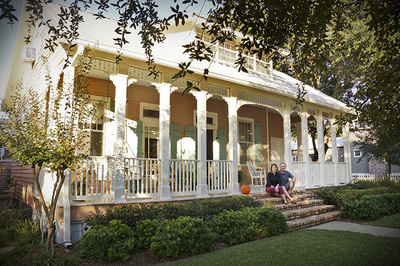






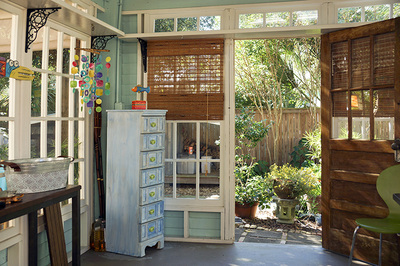









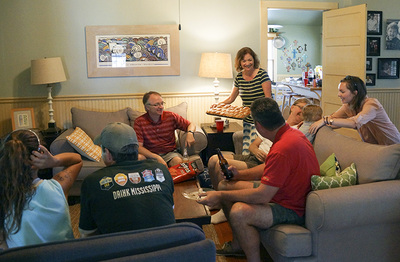










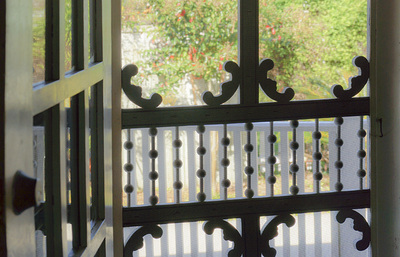










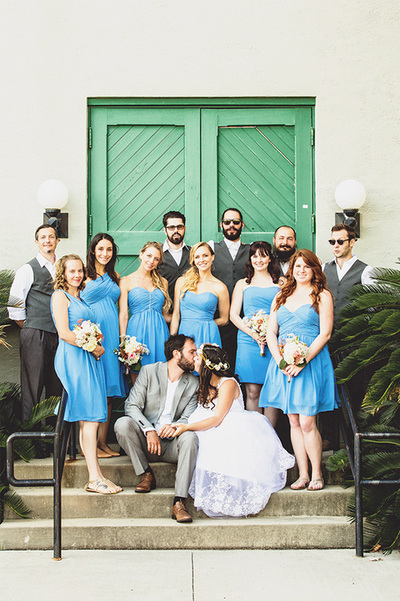




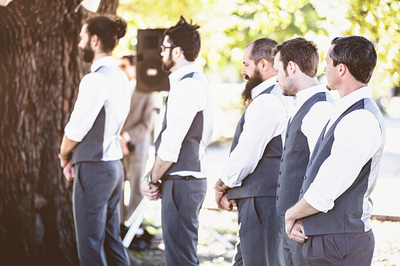

































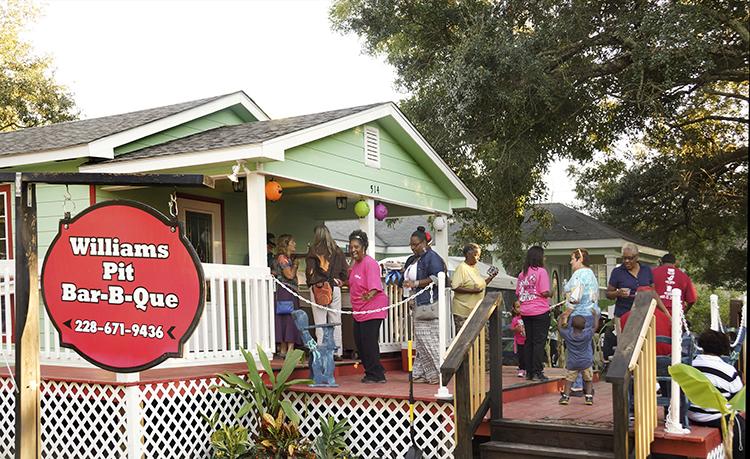
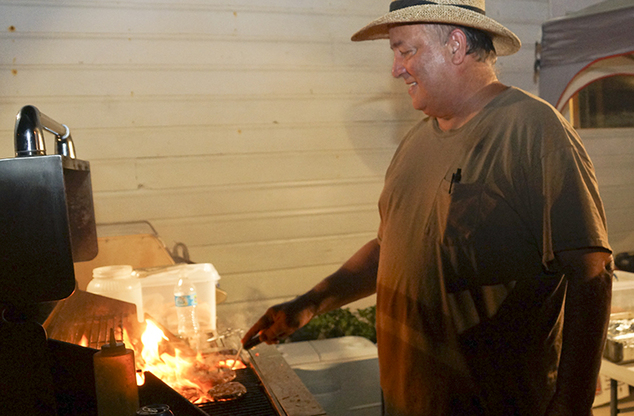





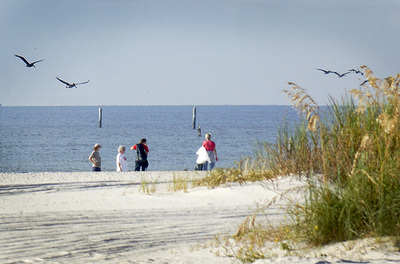











































 RSS Feed
RSS Feed























